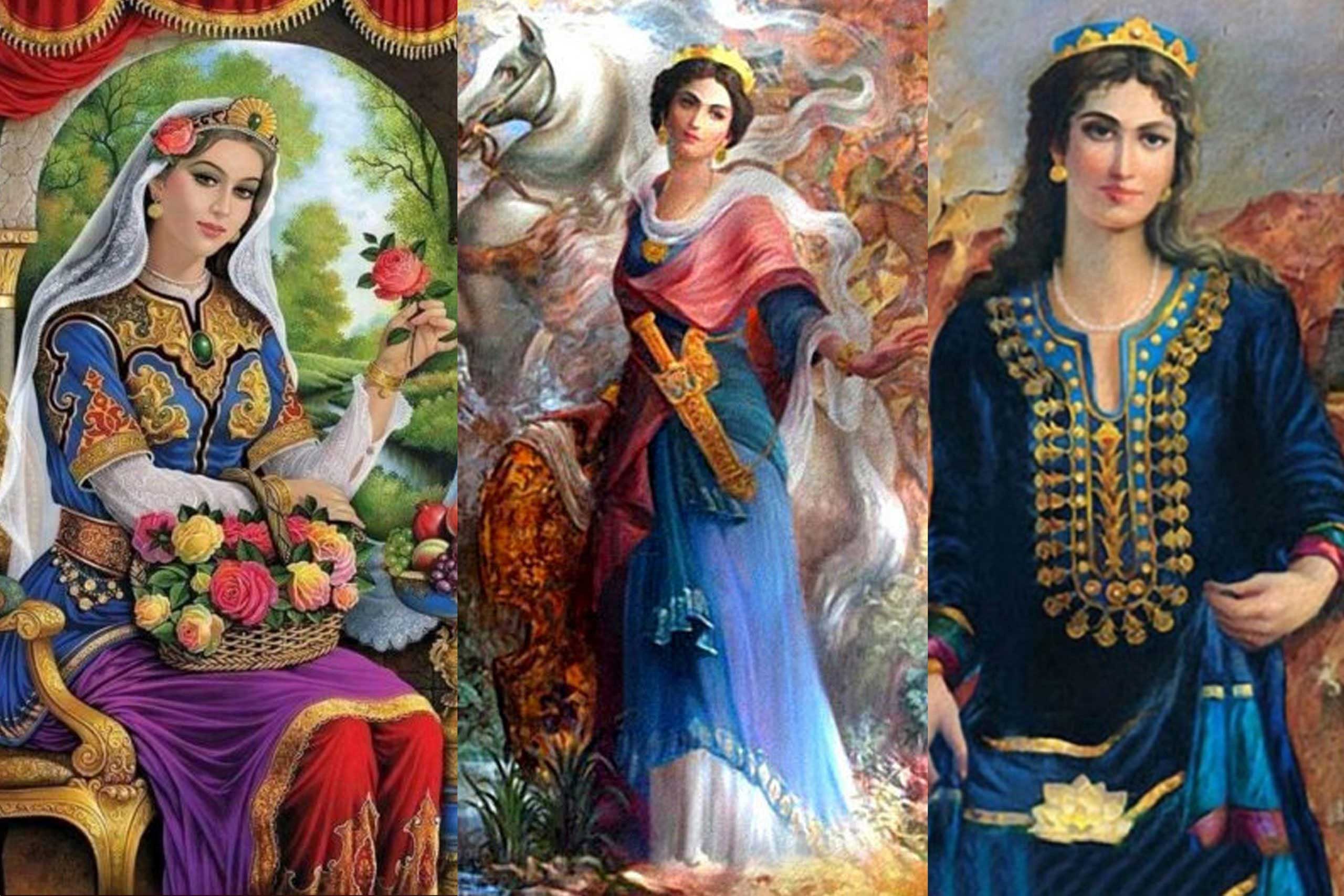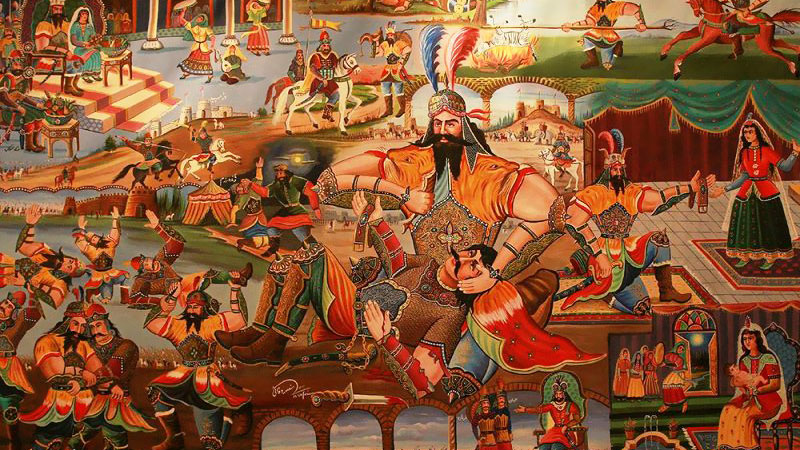Ferdowsi’s Shahnameh pulsates with grand battles and heroic exploits, yet its heart often lies in the women whose choices shape the epic’s greatest triumphs—and its deepest sorrows. From queens wielding political influence to mothers whose love transcends fate, and from courageous warrior-maidens to scheming consorts, the female characters of the Shahnameh embody power, passion, and the tragic costs of destiny.
1. Rudāba: Love That Bridges Dynasties
Role & Power. Princess Rudāba, daughter of King Mehrān of Kabul, exemplifies political savvy and gentle authority. As a tribal princess, her marriage to the Iranian hero Zal forges a crucial alliance between Iran and Kabul—an act of statecraft driven by her own counsel and conviction.
Love & Tragedy. When Zal and Rudāba first meet, their instant bond defies social conventions—Zal is shunned for his albinism, and Kabul’s nobles hesitate to unite with a white-skinned hero. Yet Rudāba’s unwavering devotion convinces her father and Zal’s father, Sām, to bless the union. Their love story culminates in the birth of Rostam, Persia’s greatest champion—but her joy is tempered by grief: legends say Rudāba dies heartbroken upon learning of Rostam’s mortal wounds years later, reminding us that even queens cannot escape the cost of heroism.
2. Tahmineh: A Mother’s Courage
Role & Power. Tahmineh, princess of Turan’s king Moghan, stands out for her bold agency. In many epics, women await suitors—Tahmineh instead takes the initiative, slipping into Rostam’s chamber under cover of night to secure the future of her land through lineage.
Love & Tragedy. Her love is pragmatic yet tender: she crafts Rostam’s son Sohrab in hopes of reconciling Iran and Turan. Yet tragedy strikes when father and son, unaware of their bond, meet on the battlefield. Tahmineh’s hopes for a bridge between two peoples are dashed in their fatal duel, underscoring how even the strongest mothers can be powerless against fate’s decree.
3. Gordafarīd: Warrior and Symbol of Resistance
Role & Power. In a rare display of martial valor, Gordafarīd, a young noblewoman of Rūdābād, dons male armor to defend her fortress against Turanian invaders. Her courageous stand—wounding the Turkish champion—buys critical time for Persian reinforcements.
Love & Tragedy. While her story lacks romance, it resonates with fierce loyalty to homeland and family. Captured but spared by the impressed enemy, Gordafarīd returns to tell the tale of female heroism. Her narrative shatters stereotypes within the Shahnameh, proving that valor and wisdom are not domains reserved for men, yet her martial episode remains an exception rather than the norm.
4. Sudābeh: Ambition and Betrayal
Role & Power. Queen Sudābeh, consort to King Kay Kāvus, wields influence at court—yet her power is tinged with self‑interest. Smitten by Prince Siyāvash’s purity and innocence, she propositions him.
Love & Tragedy. Siyāvash’s refusal sparks Sudābeh’s vengeful machinations: she accuses him of rape, driving the innocent prince into exile—and ultimately to his martyrdom. Sudābeh’s tale is a cautionary one: unchecked desire and political intrigue can topple even the most virtuous, leaving blood debts and shattered kingdoms in their wake.
5. Faranak and Humay Chehrzad: Matriarchs of Destiny
Role & Power. In the Shahnameh’s early annals, two matriarchs set the stage for dynastic change. Faranak, mother of Fereydun, shelters the boy destined to overthrow the tyrant Zahhāk, using cunning to hide him in Mount Damāvand. Generations later, Humay Chehrzad regains the throne for her son Bahman after the usurper Mehrak’s murder of his father.
Love & Tragedy. Their love for their children transforms into political action: Faranak risks her life to protect Fereydun, while Humay manoeuvres court factions to secure her son’s crown. Yet both women face heartbreak—Faranak witnesses Fereydun’s sons’ quarrel that fractures his realm, and Humay’s triumph is tinged with the sorrow of betrayal and bloodshed.
6. Themes Interwoven
-
Power & Agency. Whether ruling nations or protecting families, these women exercise power—sometimes overtly, sometimes subtly—shaping Persia’s fate as much as any king or hero.
-
Love as Catalyst. Romantic and maternal love propel key events: marriages forge alliances; maternal hopes inspire quests; forbidden desires unleash tragedy.
-
Tragic Inevitability. Time and again, Ferdowsi reminds us that even the strongest wills bend before destiny. The very qualities that empower his heroines—courage, love, ambition—also set the stage for their greatest losses.
Conclusion: Heroines Beyond the Battlefield
In the Shahnameh, women are far more than bystanders to male heroism. They counsel kings, wage moral and literal battles, sustain lineages, and—when driven by love or ambition—ignite the epic’s most poignant tragedies. Their stories invite us to recognize that true power often lies in the choices we make behind the throne: the courage to love, the wisdom to protect, and the humility to accept the limits of our control. Today, as readers around the world rediscover Ferdowsi’s epic, the women of the Shahnameh stand as timeless exemplars of agency, passion, and the profound costs of hope.





